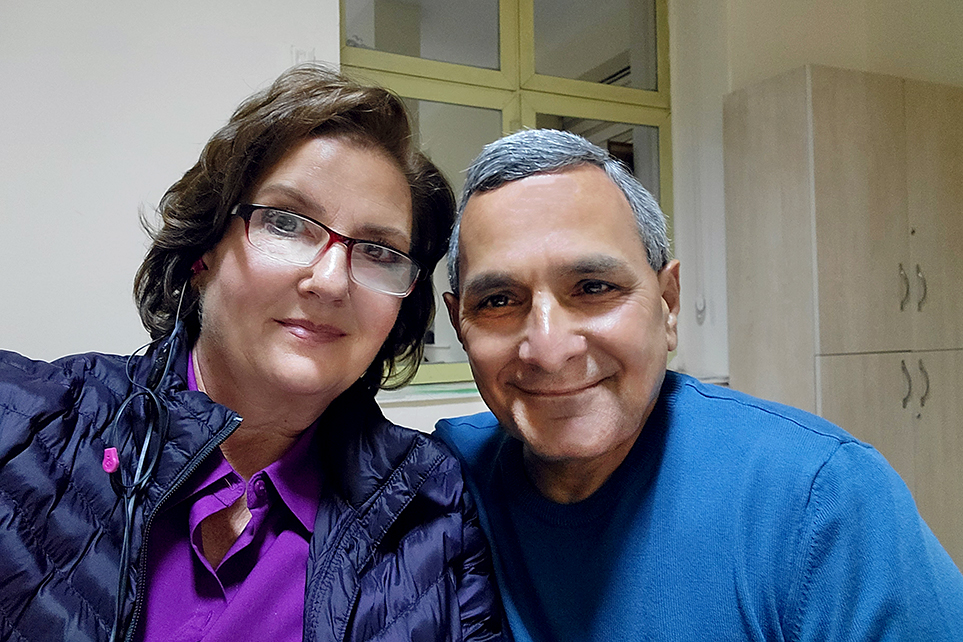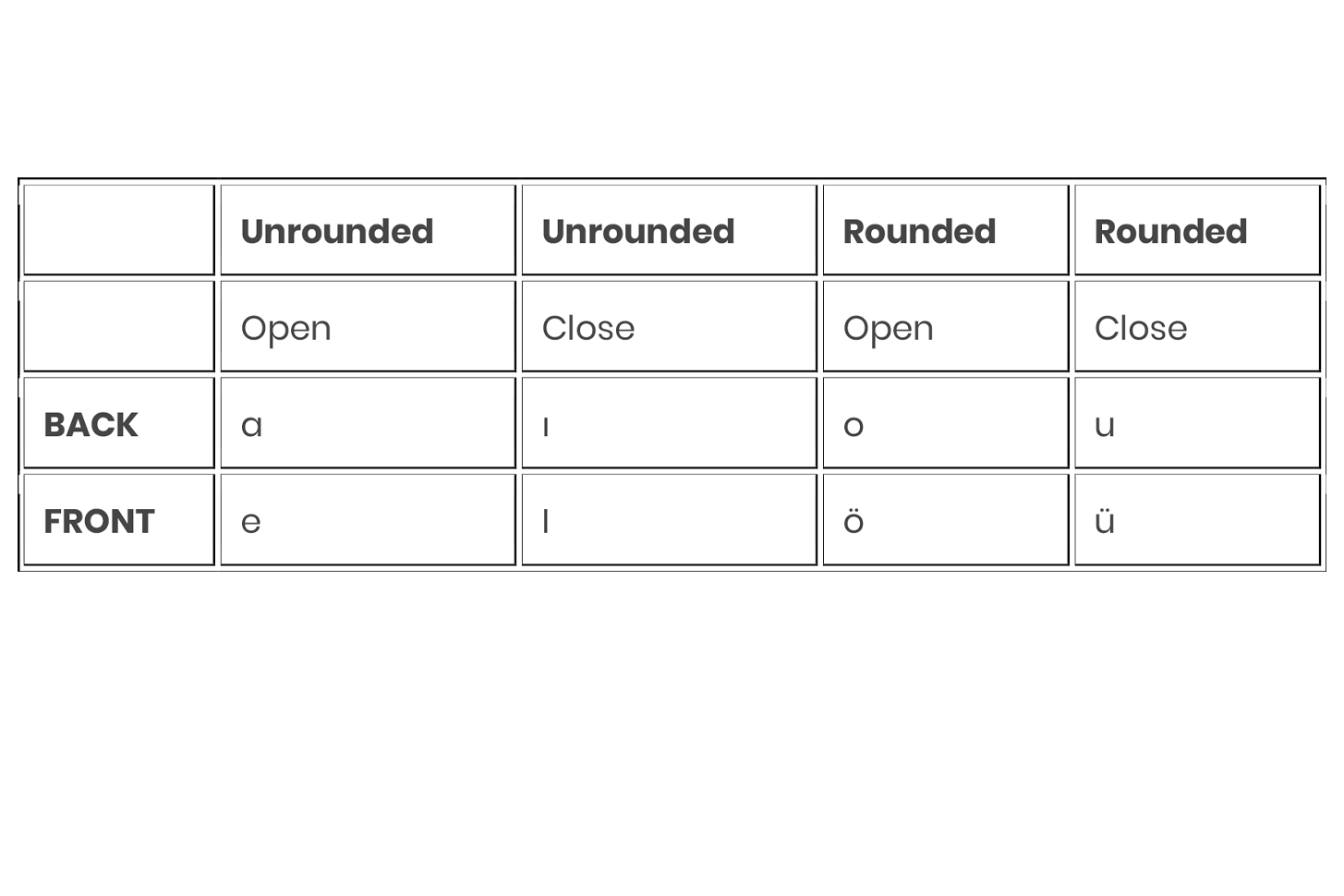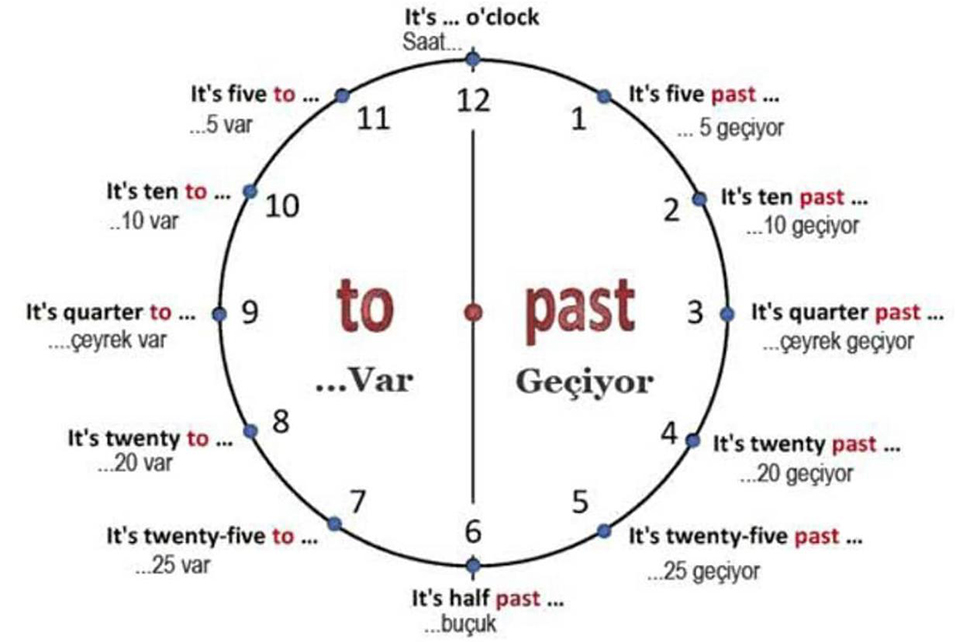
After living in Turkey for two years, I thought I should get busy learning the language. Sadly, I have little knowledge of speaking any other language than my own. The United States is a country of mixed nationalities and doesn’t declare one language, although English is the most commonly spoken.
The only foreign language experience I had was in high school when it was required to have two years of a foreign language. I chose German because my ancestors were from Germany, and I had an incredible teacher, Mrs. Janak. While taking the class, I was able to travel for the first time to Europe and learn about the history and culture of Germany.
On the other hand, my husband grew up in Lebanon, where he learned Arabic and French at a very young age. His family mainly spoke Arabic, the more common language he knew until he moved to the United States. After taking a few language classes at the college, he quickly picked up English, although he has many stories based on his misunderstanding of certain idioms and slang in Texas. While working for a large convenience store company, he had many Spanish-speaking employees, so he took a course and went to Mexico to fully immerse himself in the language. As a result, today, he can speak fluent Spanish.
When we moved to Turkey, he quickly started trying to speak Turkish words. I am always amazed at how quickly he can recall and communicate with people. I admire his approach because he isn’t afraid of butchering the word or saying something completely wrong. Turkish people appreciate foreigners who try to speak their language and are happy to help you convey the correct words.
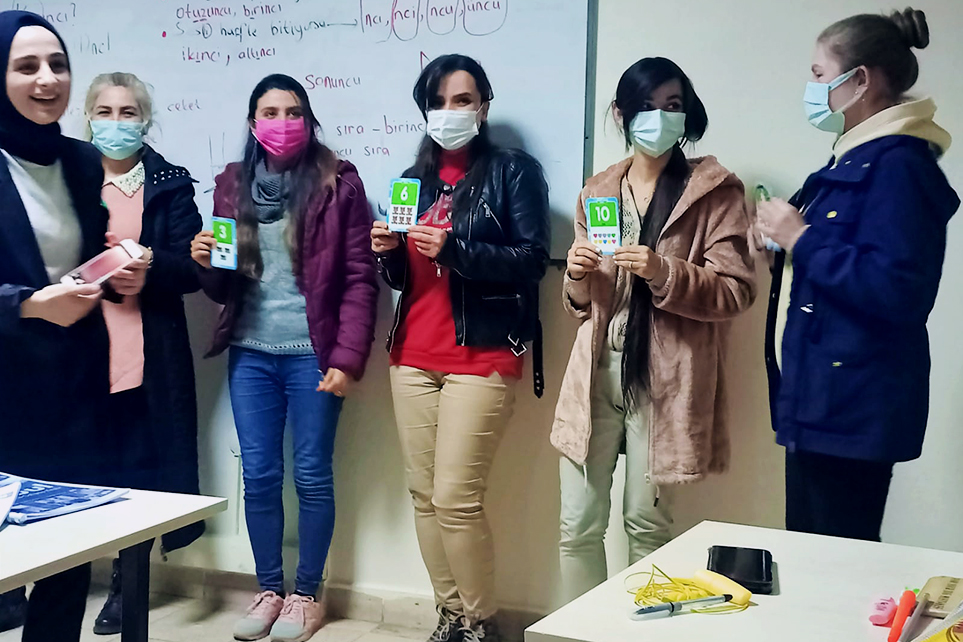
FLASHCARDS
As we began to learn Turkish, I would write words on index cards and place them on the represented item. In addition, I would sometimes draw images on the cards to help with the pronunciation of the word in Turkish.
While watching TV, we would scroll through a stack of flashcards, testing each other on word recognition and pronunciation.
Saying certain letters requires you to use different muscles in your mouth than initially seems needed. For example, some words have a ‘gurgling sound coming from the back of the tongue. Practicing the words is a great way to make use of flashcards.
By starting with nouns, you will be able to start recognizing words on signs or a menu. This is an excellent way to start, but the difficulty comes when you want to speak in complete sentences.

PRIVATE LESSONS
After learning a few essential words and phrases, we took private lessons. We thought by having a one-on-one teacher that could explain sentence structure and give word meanings, we could catch on fairly quickly. But, unfortunately, this actually did not work so well for us!
The teacher was a friendly Turkish lady who had studied German but did not understand English well. So when we would ask a question about a word or sentence structure, she most often had to refer to Google translate, which really doesn’t explain translations very well.
We also found that the lessons were more geared towards grammar, and we wanted conversational Turkish. However, after a couple of months of classes, we decided that we were not gaining the language skills we had hoped to accomplish.
YOUTUBE
In the meantime, we started searching YouTube for Turkish lessons to help us improve our abilities to speak Turkish. One of our favorites is Learn Turkish with Muki, as she explains the use of the word and relates it to English. Another great YouTuber to watch is Turkishle.
GROUP TURKISH LESSONS
Throughout Turkey, you will find municipalities that offer free courses provided to their residents (here is the link for Antalya) on various topics such as foreign language, dance, gardening, woodwork, computers, and more. (These courses are like ‘continuing education courses you might find in a junior college.)
Since we tried private lessons and teaching ourselves with flashcards and YouTube, we thought we would try taking these lessons offered in our community.
A big commitment to attend for three months, three nights a week, each class is three hours long, we registered for the course!
Tuğçe, our instructor, has been a fantastic teacher. She always walks into the classroom with a smile on her face. The lessons are designed to cover essential words, phrases, and grammar.
Our class is a mix of students from Iran, Ukraine, Russia, Iraq, England, Omar (Lebanon), and me (U.S.A.). We have enjoyed our classmates as we often socialize during breaks and sometimes bring tasty snacks to share.
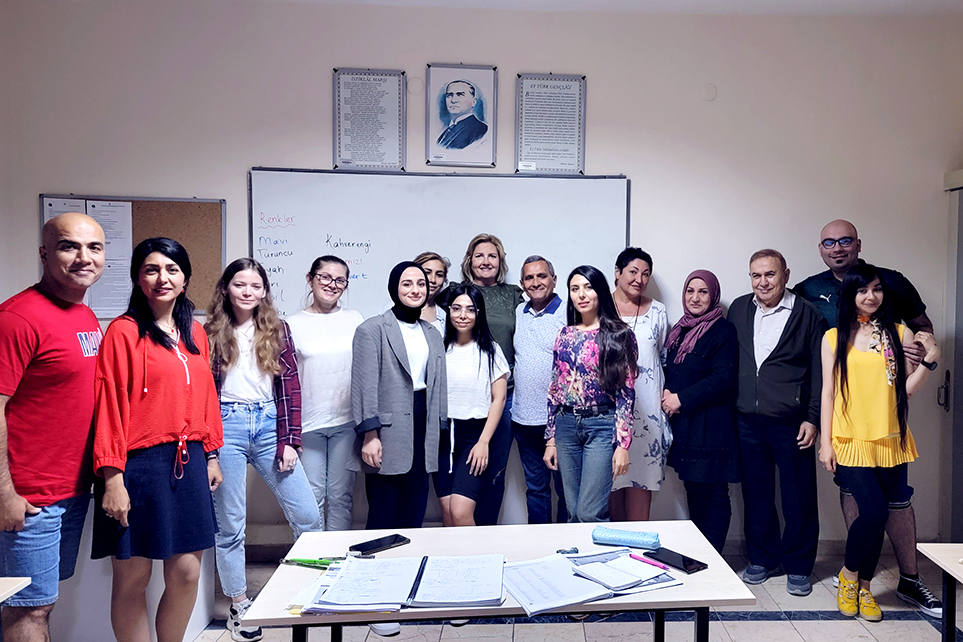
Here are some interesting language differences:
TURKISH VS ENGLISH
Turkish Alphabet
Turkey has undergone several changes in its alphabet over the centuries. Göktürk ( Orhun ), Uygur, Arabic, and Kiril are some of the old alphabets that the Turkish have used. During the Ottoman Era, the Arabic script was rich in consonants, while the Turkish language was just the opposite, having eight vowels in their alphabet. In 1922, following the downfall of the Ottoman Empire, the Latin alphabet became the official script of Turkey.
Each letter of the alphabet only has ONE phonetic sound, but a vowel letter may have an additional sound noted with a circumflex symbol above the vowel.
Most Turkish letters are pronounced the same as in English. But, a few letters will surprise you, like the letter ‘C’ makes the sound of a ‘J.” Likewise, you will not find the letters Q, X, or W in the alphabet.
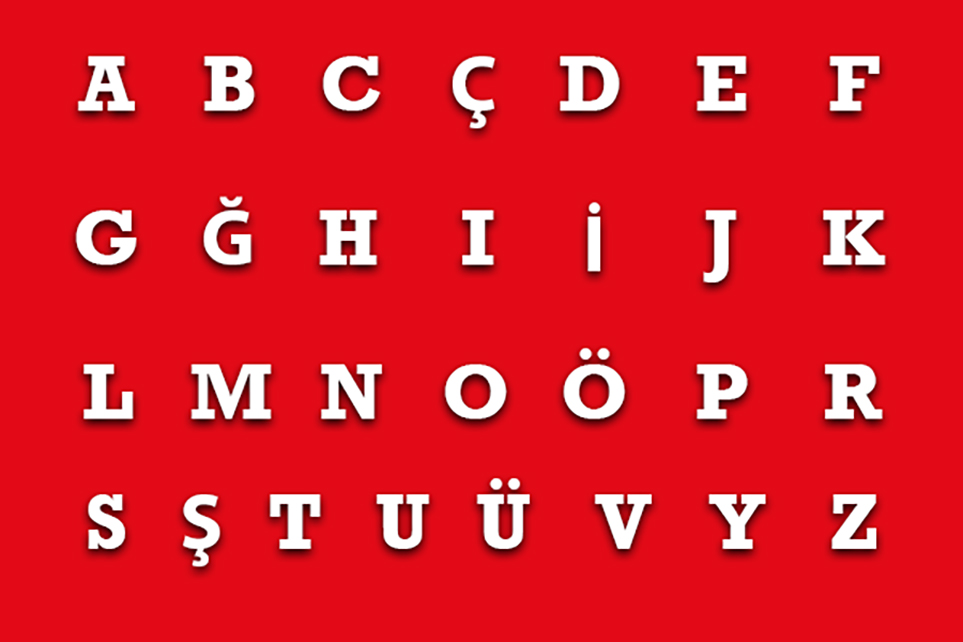
Turkish is an Agglutinative Language
“Agglutinative” means “glue” in Latin, and when used in linguistics, it means gluing words together. Turkish is an agglutinative language, so you add prefixes and suffixes instead of using isolated words. Take the below sentence as an example; three separate words are used in English, while in Turkish, they are glued together:
kitaplarımda = in my books

Vowel Harmony
The word’s suffix depends on who you are speaking to or about. The Turkish language does not believe in using extra word fillers to get to the point, so they change the word’s suffix instead by adding suffixes to nouns.
When you add a suffix to a word, you must ensure that it is ‘vowel harmony.’ Since Turkish is an agglutinative language, vowel harmony rules must be considered when attaching a suffix.
Turkish vowels are categorized into three subcategories.
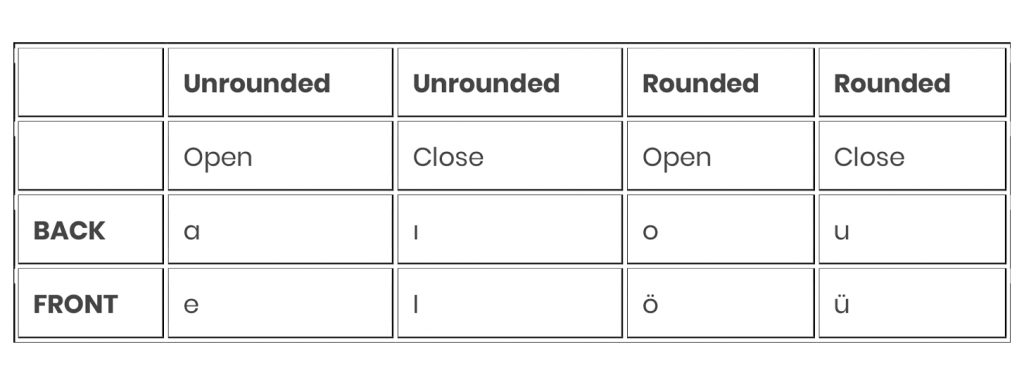
To create ‘vowel harmony‘ is simply a process where vowels of the ending match the same class of those in the root word so that they’re “in harmony.”
We will show you more examples a bit later, but for now, look at the subject pronouns with the personal ending table:
If the last vowel of a word is:
“a/ı” → uses the “ı” ending.
“e/i” → use the “i” ending.
“o/u” → uses the “u” ending.
“ö/ü” → uses the “ü” ending.
EXAMPLE: Şişe (means bottle) – since it ends with -‘e,’ it must have the suffix –ler = Şişeler (bottles)
No Articles
Interestingly, the Turkish language does not use articles such as “a” and “the.” All verbs end with a particular suffix depending on who you are speaking to and if it is present or past tense.

Sentence Structure
The tricky part is in the sentence structure. Turkish is an “SOV” language or “subject than object then verb.” In English, it is “subject – verb – object.”
So, for example, in English, you would say “Joe drinks coffee,” while in Turkish, it would be “Joe coffee drinks.“
Seriously, this is the hardest part of learning a new language because you must reroute your thinking to make the words arranged in the correct order. This may not seem difficult with a short, simple sentence, but it gets more complicated if you get a lengthy sentence.

No Diphthongs
Turkish does not have diphthongs, making it easier to sound out words. Each letter has its own sound, no matter what letter it is placed nearby. This is where you will find the letter ‘c,‘ which makes a ‘jay‘ sound, but if you see a Ç it makes the ‘ch’ sound. The same is true for the letter ‘s‘ making the ‘sa‘ sound, but if you see Ş it makes the ‘sh’ sound.
- Ş = sh as in shade
- Ç = ch as in chair
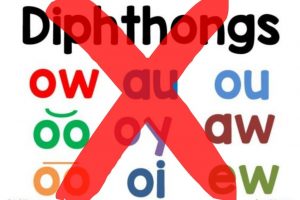
One Gender Language
“He, she, or it” identifies the person or thing in English. The Turkish language uses one pronoun, ‘o‘, representing all three gender pronouns in English.

Telling Time
You would think that everyone tells time the same around the world. Not really! Turks use the military time when speaking about time. No big deal! Here is the tricky part when telling time.
When referring to quarter past the hour, you must indicate by saying ‘çeyrek geçiyor.’ On the other hand, telling time regarding a quarter to the hour will say ‘çeyrek var.’ In addition, whether you are saying ‘quarter to‘ or quarter past‘ depends on the type of suffix added to the number word.
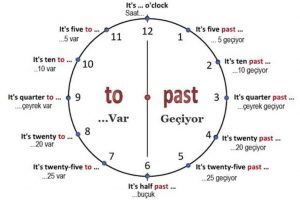
We Can Only Hope for the Best!
This is just the tip of the iceberg in learning the Turkish language. Although I take a lot of notes and have already filled my first notebook, I’m by no means proficient in the language, but my husband, who hardly takes any notes, can speak it and communicate well in public. However, each time I learn a new grammar rule or practice speaking Turkish words, I feel like I am getting better and better. I can only hope that at some point it will magically click, and I will be able to have conversations in Turkish. We can only hope!
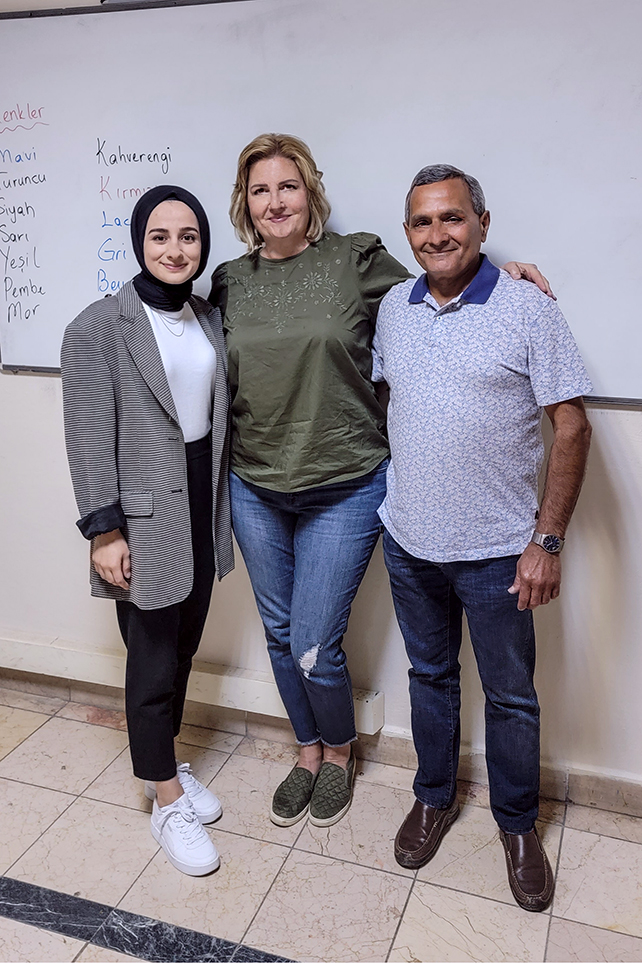
Enjoy your travels! Please read my blogs about other exciting places around the world at Traveling Lens Photography.
If you want to read more follow me on Facebook, Instagram, or Pinterest as I share my journey.
Happy Travels!






